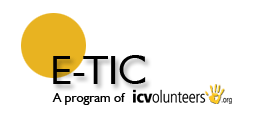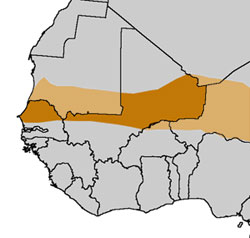RegionsThe Sahel Region
E-TIC focuses its activities in the regions of Senegal and Mali, most particularly in the pastoral zones of the Sahel. The Sahel or Sahel Belt (from Arabic ساحل, sāḥil, shore, border or coast of the Sahara) is a semi-arid tropical savanna and steppe eco-region in Africa, which forms the transition between the Sahara to the north and the slightly less arid savanna belt to the south, known as the Sudan (not to be confused with the country of the same name). In Senegal, approximately 70% of the working population is involved in agriculture (including forestry, stockbreeding and fishing). The following languages are spoken by the population in Senegal: French (official), Balanta-Ganja, Hassaniyya, Jola-Fonyi, Mandinka, Mandjak, Mankanya, Noon, Pulaar, Serer-Sine, Soninke and Wolof. The average literacy rate in the country is 39.3%, that is 51.1% for men and 29.2% for women. With regards to Mali’s economy, agriculture and stockbreeding represent essential sectors in the country. However, only the southern part of Mali is favourable for agriculture and less than 2% of the country’s surface area is cultivated. Mali is faced with the environmental problems of drought, deforestation, soil erosion, desertification and an insufficient supply of drinking water. The languages spoken by the population of Mali are: French (official), Bambara (Bamanankan), Bomu, Hassaniya Arabic, Maasina Fulfulde, Mamara Senoufo, Kita Maninkakan, Koyraboro Senni Songhay, Pulaard, Songo, Soninke, Syenara Senoufo, Tamasheq, Tieyaxo Bozo, Toro So Dogon and Xaasongaxango. The isolated nature of rural zones means a large majority of farmers, herders and fishermen do not have access to information and communication technologies and knowledge that would be very useful for their work and existence. Within this context, the E-TIC program has specifically been active in six locations, in which farming herding and fishing are of major importance, in addition to the two capitals, major hubs of economic activity:
|


